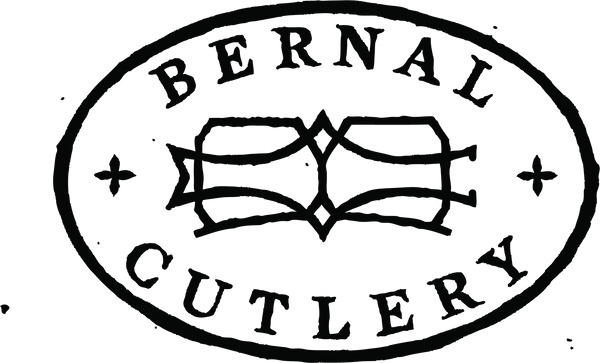-
Currency
-
NEW
- All New Products
- New Kitchen Knives
- New Kitchen Tools
- Latest Vintage
- New Outdoor & Utility
- New Pantry
-
What's in my Basket Series
- Ryo Sakai -Kuma Sushi
- Ian McNemar - Woodworker, Instructor
- Anna Voloshyna - Author
- Jorge Martinex Lillard - Lolo´
- Chris Yang - Piglet & Co
- Griffin Wilson - @cabincorn
- Gabe Rudolph - Gestura Utensils
- Marc Schechter - Square Pie Guys
- Molly DeCoudreaux - Food Photographer
- Geoff Davis - Burdell Soul Food
- Jen and Wes - @crazythickasians
- Josh Donald - Bernal Cutlery
- Kelly Kozak - Bernal Cutlery
- Jessica Sullivan - Poppy SF
- Sylvan Mishima Brackett - Rintaro
- Michael Myers - Film Character
- Ali Hooke - @alihooke
- Bruce Hill - The Chef's Press
- Dylan Carasco - Butcher's Guide
- Spencer Horowitz - Hadeem
-
Japanese Knives
- Ashi Hamono
- Gihei Knives
- Godo Tadaharu
- Hado
- Hatsukokoro
- Hitohira
- Jiro Nakagawa
- Iwasaki Kamisori
- Kaji-Bei
- Kamo Shiro
- Kanehide
- Konosuke
- MAC Knife
- Masakane
- Makoto Tadokoro Marushin
- Mizuno Axes
- Morihei
- Myojin Riki Sesakusho
- Nakagawa Hamono
- Naozumi
- Nigara Hamono
- Sakai Kikumori
- Shigefusa
- Tagai
- Takada no Hamono
- Tanabe Tatara
- Yoshikazu Tanaka
- Tosa
- Tsukasa Hinoura
- Yoshikane
- Wakui
-
Global Knives
- Allday Goods (GBR)
- A Wright & Son (GBR)
- Blenheim Forge (GBR)
- J Adams (GBR)
- John Nowill & Son (GBR)
- Wood Tools (GBR)
- Au Sabot (FRA)
- Chazeau Honoré (FRA)
- Fontenille Pataud (FRA)
- K Sabatier (FRA)
- David Margrita (FRA)
- Opinel (FRA)
- Eichenlaub Tableware (DEU)
- Friedr Herder (DEU)
- Windmühlenmesser (DEU)
- Florentine Kitchen Knives (ESP)
- Pallares (ESP)
- Helle (NOR)
- Andersson & Copra (SWE)
- Hults Bruks Axes (SWE)
- Kalthoff Axes (SWE)
- Morakniv (SWE)
- Iisakki Jarvenpaa (FIN)
- Zirh (TUR)
- Alma Knife Co. (USA)
- Bernal Cutlery (USA)
- Benchmade Knives (USA)
- Buck Knives (USA)
- Dexter Russell (USA)
- Rolin Knives (USA)
- Silverthorn (USA)
- Steelport Knife Co. (USA)
- Tactile Knife Company (USA)
-
Styles
- Bernal Cutlery Collaborations
- Knife Sets
- Carving Sets
- Japanese Kitchen Knives
- Western Kitchen Knives
- Chinese Style Cleavers
- Bread
- Butchery
- Cheese | Charcuterie
- Young Chefs
- Woodworking | Hobby | Craft
- Kamisori Razors
- Table | Steak
- Pocket & Folding
- Fixed Blade, Axes & Outdoor Tools
- Scissors | Shears | Snips
- Left Handed
- The Vault
- Vintage
- Sayas | Guards
- Sharpening
- Kitchen | Cookware
- Tableware | Service
- Pantry
- Accessories
- Deals
- Gift Cards
- INFO
or
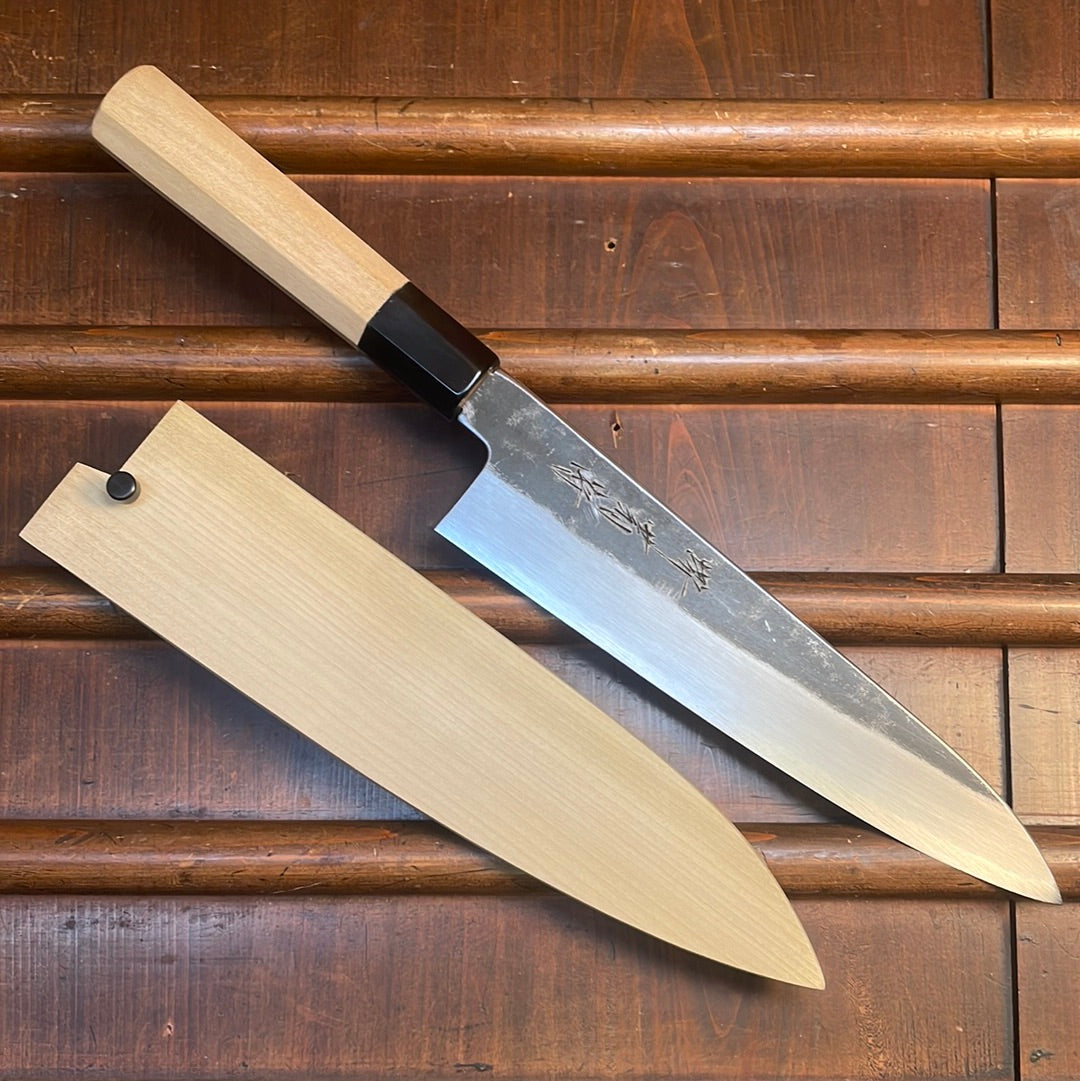
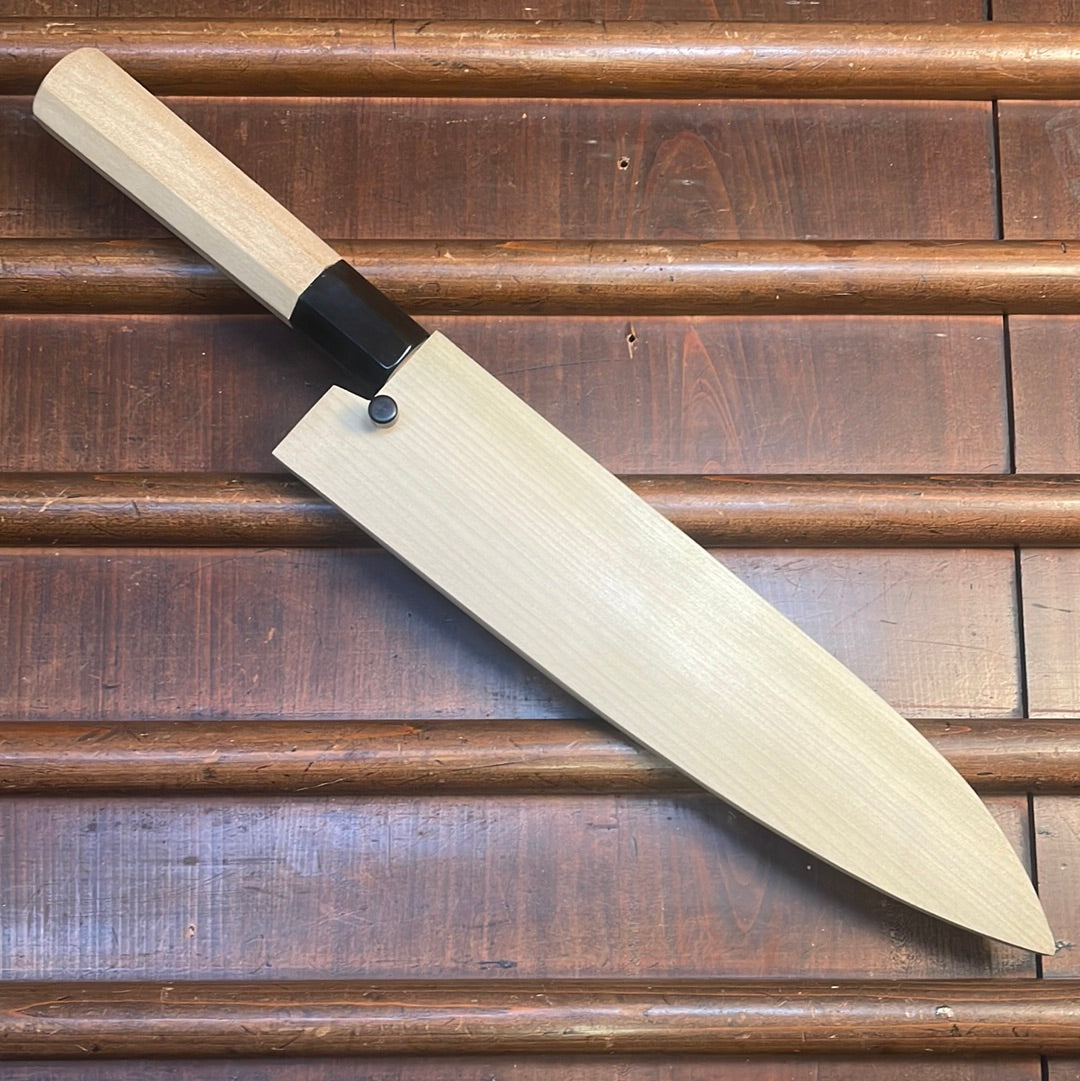
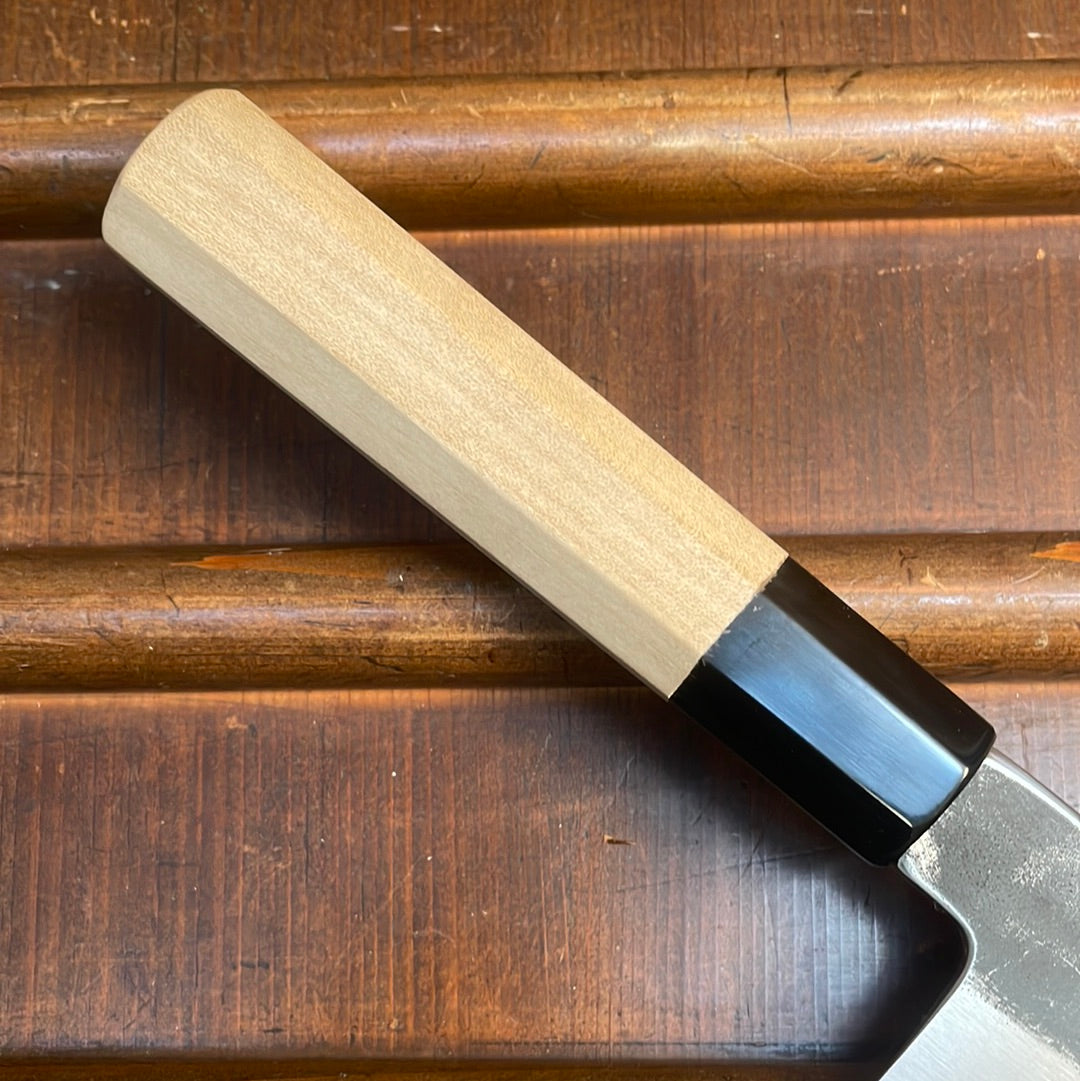
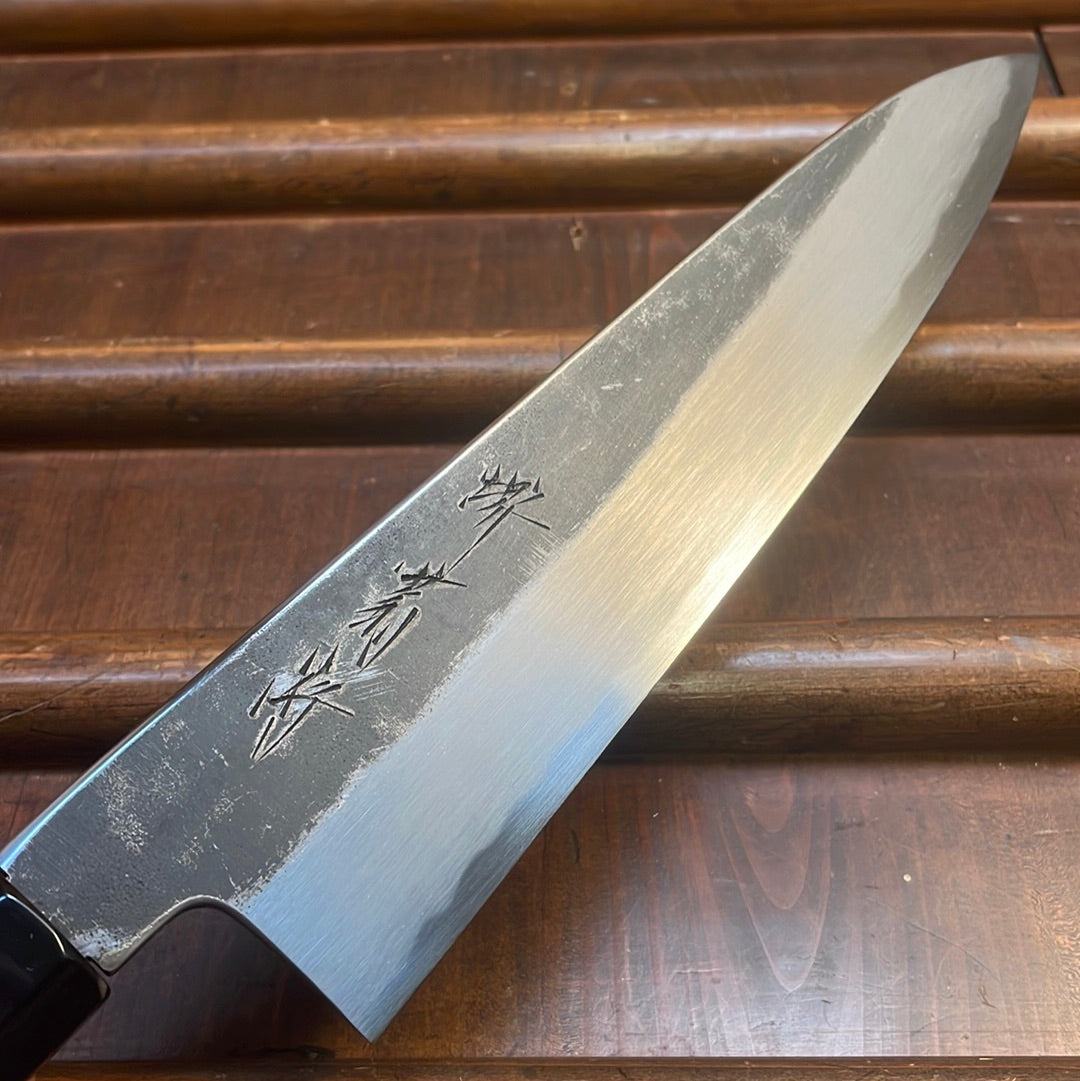
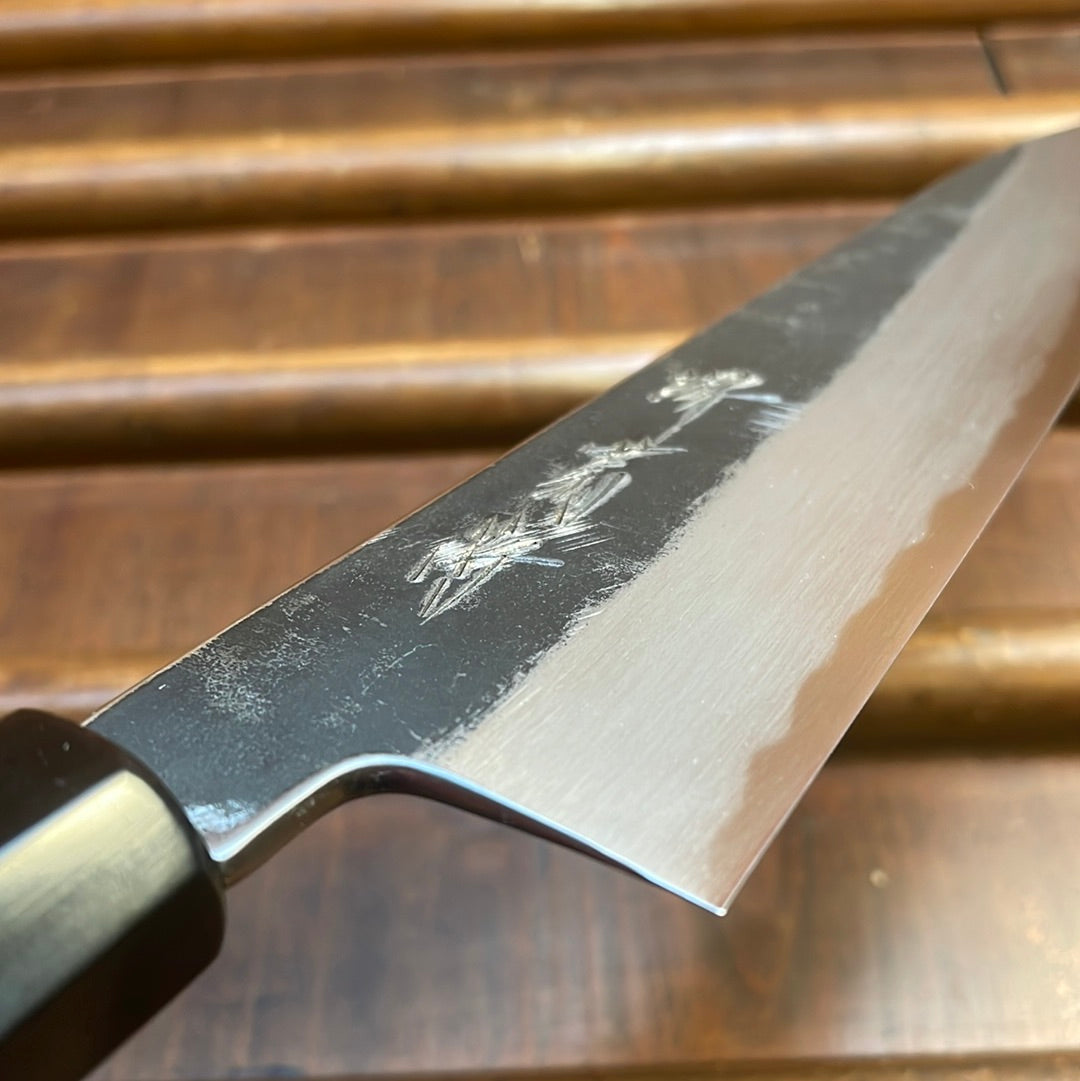
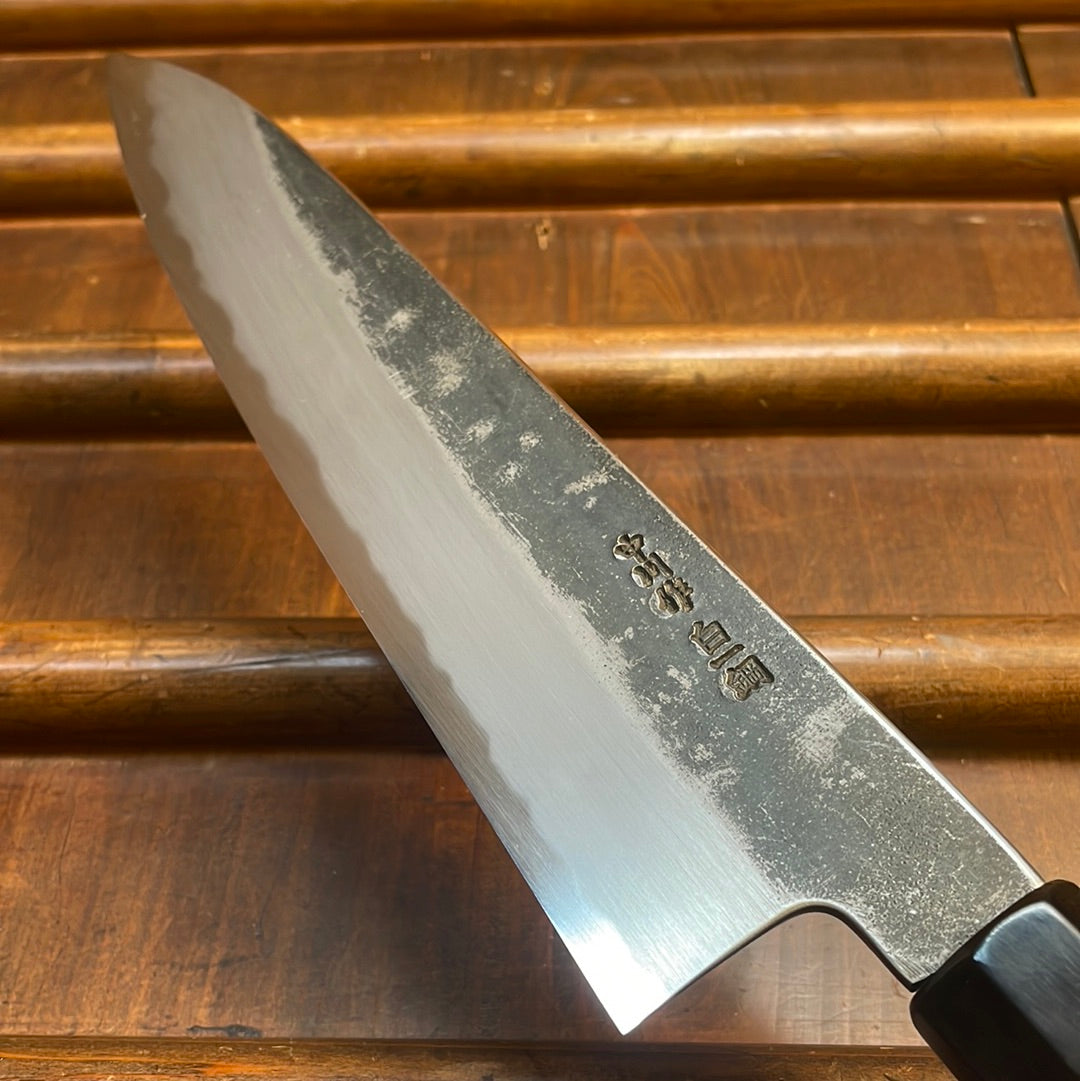
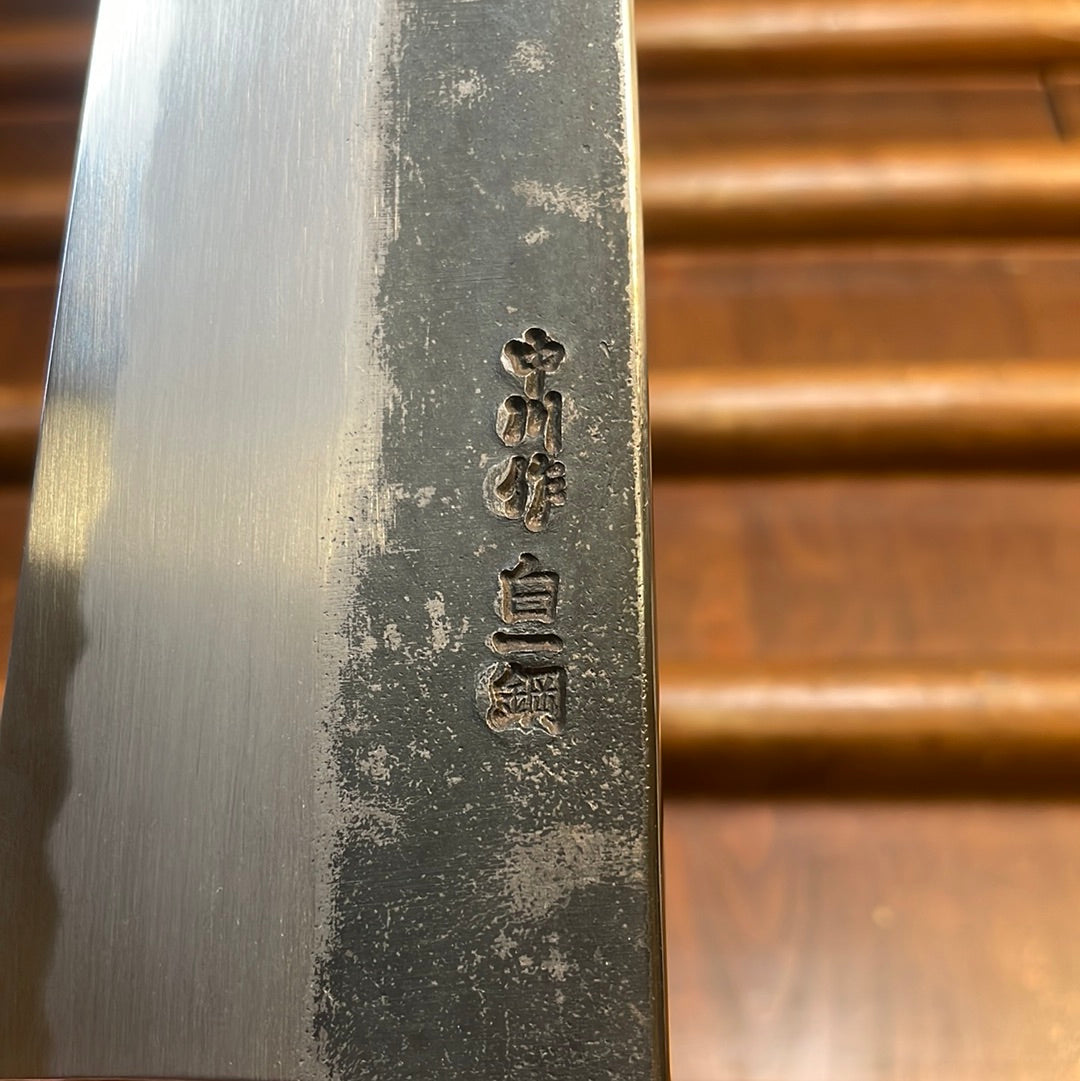
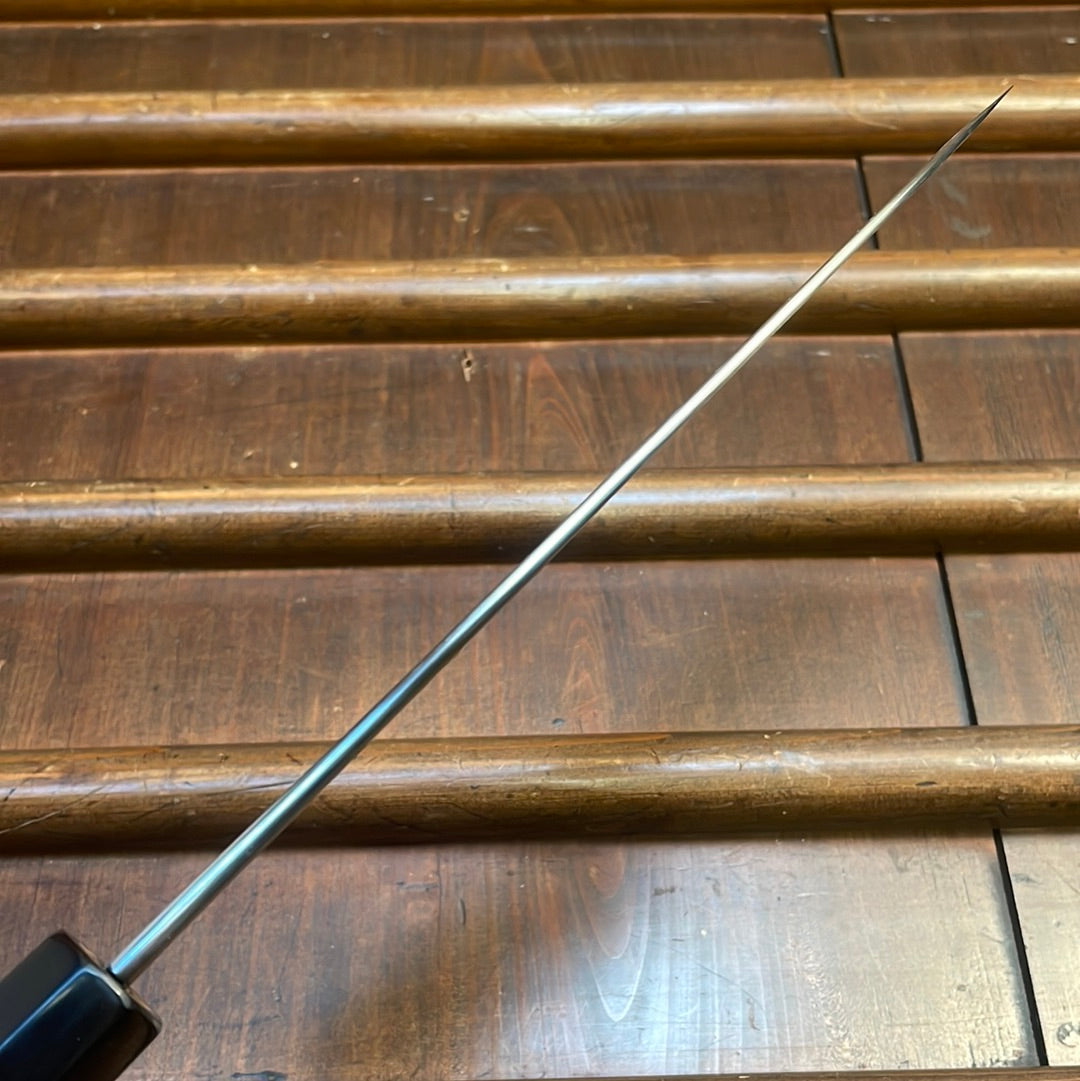
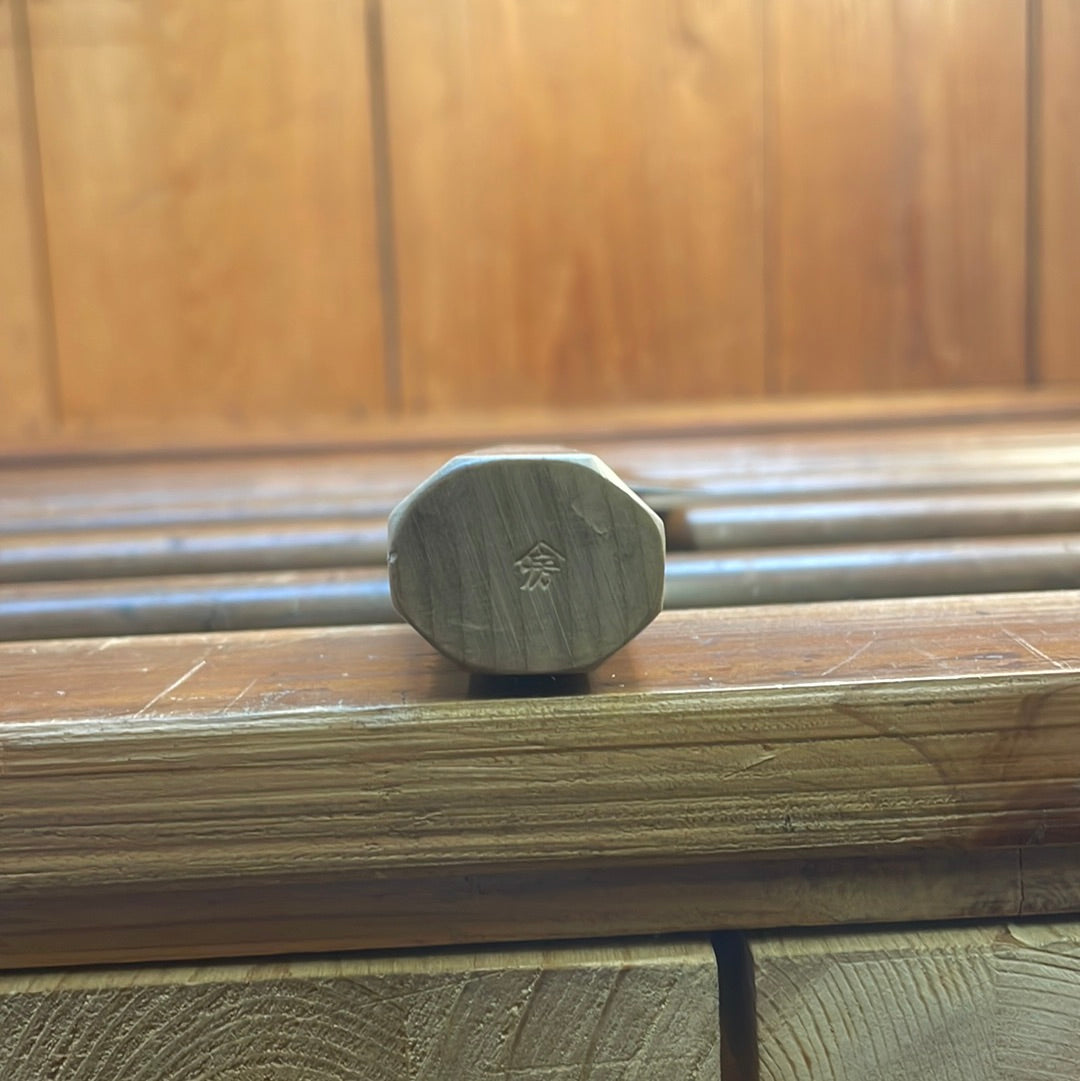
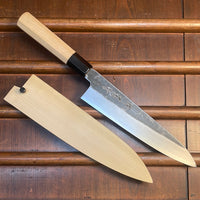
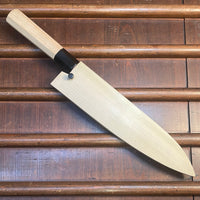
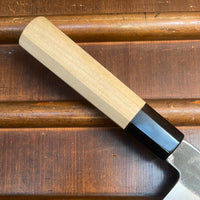
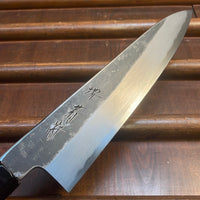
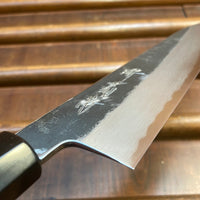
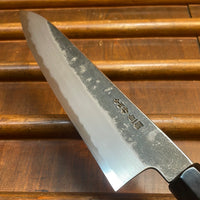
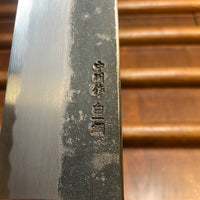
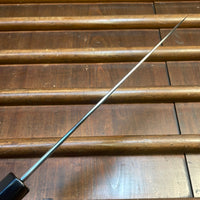
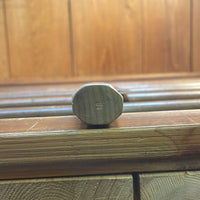
Sakai Kikumori Nakagawa 210mm Gyuto Shirogami 1 Kurouchi Ho Wood with Saya
-
Regular Price
-
£314.28
-
Sale Price
-
£314.28
-
Regular Price
-
Sale
Sold Out
-
Unit Price
- /per
- Regular Price
- £314.28
- Sale Price
- £314.28
- Regular Price
- Unit Price
- /per
We are proud to introduce as the sole North American retailer, knives done as a collaboration between Sakai Kikumori and Nakagawa Hamono. Inspired by a conversation with Bernal Cutlery’s Lisa and Josh with Sakai Kikumori, Kawamura-san at Kikumori asked what we would like to see, and shirogami 1 and aogami 1 kurouchi gyutos from Nakagawa Hamono came to mind.
These knives represent a blend of the rustic and the refined. They have a dark forge-scale ‘kurouchi’ finish and exceptionally thin grinds to support the superb forging. Nakagawa-san's smithing is characterized by thorough heat treatment with excellent heat control during forging. The result are knives that have remarkable edge formation and edge retention while remaining tough.
Shirogami is rated at 3, 2, & 1; increasing in carbon content as the number gets smaller. Typically, shirogami 3 is tough with a shorter edge life than shirogami 2, and shirogami 1 has the best edge life with the least toughness. However, in the hands of Nakagawa-san, this shirogami 1 is given better toughness which offsets its more brittle nature. This is definitely a sharpener's steel that works well at a very fine finish. It is a real pleasure to sharpen Nakagawa-san's shirogami 1. It has a longer lived edge than his shirogami 2 and performs well at very fine finishes- it’s a true blank slate that’s great for a huge variety of finishing stones, especially natural stones.
These have a natural (as opposed to chemically applied) kurouchi finish which will include some hammer marks and rougher cosmetic grinder marks. When cared for properly, the kurouchi will gradually fade and be replaced with a patina from use.
Nakagawa-san's knives are characterized by excellent heat control during forging and a very thorough heat treatment creating knives that have superb edge formation and edge life with good toughness. His carbon steels are easy to sharpen across most steel types. Nakagawa-san's reputation as one of a few blacksmiths in Sakai to forge Ginsanko and VG10 stainless steels that results in excellent edge life and toughness is well earned.
Sakai Kikumori was started in 1926 and draws on Sakai's 600 year history as the major center of traditional Japanese cutlery manufacturing. They work with a large variety of Sakai's best smiths, sharpeners and small factories to offer a wide variety of knives ranging from traditional to modern.
This knife has a hard carbon steel core with iron cladding for added durability. The entire blade will develop a patina with use, especially with acidic foods. Special attention is needed to keep the blade from rusting. Do not leave wet; hand wash & dry. Never use a dishwasher. Rust can be removed using a light abrasive. Hardwood end-grain or softwood long-grain cutting boards are preferred; avoid bamboo and plastic cutting boards to reduce edge damage.
*Actual weights and measurements may vary piece to piece
Brand: Sakai Kikumori
Smith: Satoshi Nakagawa
Producing Area: Sakai, Japan
Shape: Gyuto
Size: 210mm
Steel Type: Carbon Steel
Steel: Iron-Clad Shirogami 1
Handle: Octagonal Ho & Horn
Total Length: 340mm
Handle Length:
Handle to Tip Length:
Blade Height: 46mm
Edge Length: 198mm
Thickness: 3.81mm
Weight: ~148g (varies)
Hand Orientation: Ambidextrous
Saya: Included
HRC: 63-64
*Measurements are taken from random sample
Actual measurements of knife received may vary.
This is a carbon steel knife. Carbon steel is expected to develop a dark patina with use. It needs to be hand washed and dried immediately after use. Do not air dry. Do not put it in the dishwasher. Long exposure to moisture and debris will result in rust. Any rust development should be removed with a light abrasive.
Twisting, scraping, and heavy use, as well as use on hard and very dense objects can lead to edge damage. Use on a quality wooden cutting board will help the knife stay sharper for longer. Use on hard surfaces like plates and bamboo will reduce the edge life and can result in edge damage. Special attention needs to be taken to prevent edge damage. Scraping, twisting and forceful as well as using on hard or very dense foods can result in chipping.
We recommend hand sharpening on whetstones. We have found that most Japanese knives perform best at a finer finish starting around 4000. Avoid pull through sharpeners and non-water cooled mechanized sharpening. Ceramic honing rods are preferred.
Recently Viewed
About Bernal Cutlery
We are a full-service cutlery shop offering sharpening services, Japanese and Western culinary knives, vintage knives, outdoor, pocket and craft knives, cooking tools and accessories. We also offer knife skills and sharpening classes, and more.
We are proud to serve kitchen professionals, knife enthusiasts and home cooks alike. Located in the Mission District of San Francisco, California.
